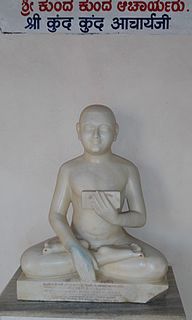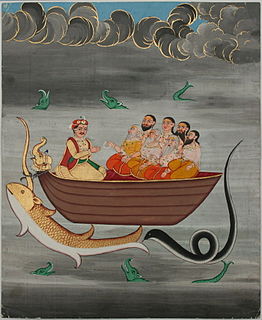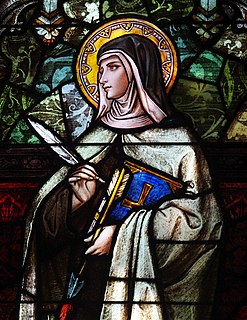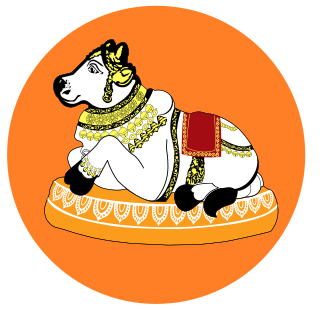 W
WĀśān is a Malayalam and Tamil surname and title that means teacher or guide.
 W
WA Bhaṭṭāraka heads traditional Digambara Jain institutions. He is responsible for training scholars, maintenance of libraries, managing endowments, presiding over installation ceremonies and running Jain institutions.
 W
WA bhikkhu is an ordained male monastic ("monk") in Buddhism. Male and female monastics are members of the Buddhist community.
 W
WIn Indian religions, a chakravarti is an ideal universal ruler, especially one who rules the entire Indian sub-continent. The first references to a Chakravala Chakravartin appear in monuments from the time of the early Maurya Empire, in the 4th to 3rd century BCE, in reference to Chandragupta Maurya and his grandson Ashoka.
 W
WShankaracharya (शङ्कराचार्य) is a commonly used title of heads of monasteries called mathas in the Advaita Vedanta tradition of Hindu Dharma. The title derives from Adi Shankara, teachers from the successive line of teachers dating back to him are known as Shankaracharyas.
 W
WGossain or Gosain or Gussain or Gosyne is a Hindi word derived from Sanskrit: गोस्वामी gōswāmī "lord of senses". It is used as a title in various Indian religious traditions.
 W
WJain monasticism refers to the order of monks and nuns in the Jain community and can be divided into two major denominations: the Digambara and the Śvētāmbara. The monastic practices of two the major sects vary greatly, but the major principles of both are identical. Five mahāvratas, from Mahavira's teachings, are followed by all Jain ascetics. Historians believe that a united Jain sangha (community) existed before 367 BCE, about 160 years after the moksha (liberation) of Mahavira. The community then gradually divided into the major denominations.
 W
WMahant is a religious superior, in particular the chief priest of a temple or the head of a monastery in Indian religions. Mahant title is used by Bairagi Kings of Chhuikhadan & Nandgaon States. Mahant is also the Surname of Bairagis.
 W
WA Mantrik or mantric is someone who specializes in practicing mantra. In the Indian subcontinent, the word mantrik & similar names are synonymous with magician in different languages. Generally, a mantrik is supposed to derive his powers from the use of charms, mantras, spells and other methods. A Hindu mantrik is known to worship Kali and is often mentioned in the same breath as tantric, though there are subtle differences.
 W
WRishi Mudgal, also known as Rajarshi Mudgal, is one of the Rajarshi in Hinduism. He was originally born as a Kshatriya king but later on due to severe meditation, tapasya,Yoga, he received Brahmatva (Nirvana), due to which his descendants were later on known as Brahmins.
 W
WMuni – a term for types of ancient Indian sages and hermits or ancient Indian ascetics. Sages of this type are said know the truth of existence not on the basis of scientific texts but through self-realization.
 W
WA Pandit (Sanskrit: पण्डित, romanized: paṇḍita; Hindi: पंडित; also spelled Pundit, pronounced ; is a man with specialised knowledge or a teacher of any field of knowledge in Hinduism, particularly the Vedic scriptures, dharma, or Hindu philosophy; in colonial-era literature, the term generally refers to Brahmins specialized in Hindu law. Today, the title is used for experts in other subjects, such as music.
 W
WParamahamsa (परमहंस), also spelled paramahansa or paramhansa, is a Sanskrit religio-theological title of honor applied to Hindu spiritual teachers who have become enlightened. The title literally means "supreme swan," and symbolizes spiritual discrimination. The swan is equally at home on land and on water; similarly, the true sage is equally at home in the realms of matter and of spirit. To be in divine ecstasy and simultaneously to be actively wakeful is the paramahansa state; the 'royal swan' of the soul floats in the cosmic ocean, beholding both its body and the ocean as manifestations of the same Spirit. The word 'Paramahamsa' signifies one who is Awakened in all realms. Paramahansa is the highest level of spiritual development in which a union with ultimate reality has been attained by a sannyasi.
 W
WThe guru–shishya tradition, or parampara ("lineage"), denotes a succession of teachers and disciples in traditional Vedic culture and religions such as Hinduism, Jainism, Sikhism and Buddhism. Each parampara belongs to a specific sampradaya, and may have its own akharas and gurukulas. It is the tradition of spiritual relationship and mentoring where teachings are transmitted from a guru "teacher" to a śiṣya "disciple" or chela(Hinduism)|agamic]], architectural, musical or spiritual, is imparted through the developing relationship between the guru and the disciple. It is considered that this relationship, based on the genuineness of the guru, and the respect which is not based on age or how old one looks, commitment, devotion and obedience of the student, is the best way for subtle or advanced knowledge to be conveyed. The student eventually masters the knowledge that the guru embodies.
 W
WPūjari is a designation given to a Hindu temple priest who performs pūja. The word comes from the Sanskrit word "पूजा" meaning worship. They are responsible for performing temple rituals, including pūjā and aarti. Pujari are mainly drawn from the Hindu Brahmin.
 W
WRishi is a term for an accomplished and enlightened person. They find mentions in various Hindu Vedic texts. Rishis are believed to have composed hymns of the Vedas. Post-Vedic tradition of Hinduism regards the rishis as "great yogis" or "sages" who after intense meditation (tapas) realized the supreme truth and eternal knowledge, which they composed into hymns. The term appears in Pali literature as Ishi and in Buddhism, they can be either Buddhas, Paccekabuddhas, Arahats or a monk of high rank.
 W
WSadhu, also spelled saadhu, is a religious ascetic, mendicant or any holy person in Hinduism and Jainism who has renounced the worldly life. They are sometimes alternatively referred to as yogi, sannyasi or Bairagi.
 W
WIn religious belief, a saint is a person who is recognized as having an exceptional degree of holiness, likeness, or closeness to God. However, the use of the term "saint" depends on the context and denomination. In Catholic, Eastern Orthodox, Anglican, Oriental Orthodox, and Lutheran doctrine, all of their faithful deceased in Heaven are considered to be saints, but some are considered worthy of greater honor or emulation; official ecclesiastical recognition, and consequently a public cult of veneration, is conferred on some saints through the process of canonization in the Catholic Church or glorification in the Eastern Orthodox Church.
 W
WSannyasa is life of renunciation and the fourth stage within the Hindu system of four life stages known as Ashramas, with the first three being Brahmacharya, Grihastha (householder) and Vanaprastha. Sannyasa is traditionally conceptualized for men or women in late years of their life, but young brahmacharis have had the choice to skip the householder and retirement stages, renounce worldly and materialistic pursuits and dedicate their lives to spiritual pursuits.
 W
WShaunaka is the name applied to teachers, and to a Shakha of the Atharvaveda. It is especially the name of a celebrated Sanskrit grammarian, author of the Ṛgveda-Prātiśākhya, the Bṛhaddevatā, the Caraṇa-vyūha and six Anukramaṇīs (indices) to the Rigveda. He is claimed as the teacher of Katyayana and especially of Ashvalayana, and is said to have united the Bashkala and Shakala Shakhas of the Rigveda. In legend, he is sometimes identified with Gritsamada, a Vedic Rishi. According to the Vishnu Purana, Shaunaka was the son of Gritsamada and invented the system of the four levels of human life. Sūta maha muni narrated mythological stories to a group of sages headed by Shaunaka maha muni.
 W
WThe guru–shishya tradition, or parampara ("lineage"), denotes a succession of teachers and disciples in traditional Vedic culture and religions such as Hinduism, Jainism, Sikhism and Buddhism. Each parampara belongs to a specific sampradaya, and may have its own akharas and gurukulas. It is the tradition of spiritual relationship and mentoring where teachings are transmitted from a guru "teacher" to a śiṣya "disciple" or chela(Hinduism)|agamic]], architectural, musical or spiritual, is imparted through the developing relationship between the guru and the disciple. It is considered that this relationship, based on the genuineness of the guru, and the respect which is not based on age or how old one looks, commitment, devotion and obedience of the student, is the best way for subtle or advanced knowledge to be conveyed. The student eventually masters the knowledge that the guru embodies.
 W
WSiddha is a term that is used widely in Indian religions and culture. It means "one who is accomplished." It refers to perfected masters who have achieved a high degree of physical as well as spiritual perfection or enlightenment. In Jainism, the term is used to refer to the liberated souls. Siddha may also refer to one who has attained a siddhi, paranormal capabilities.
 W
WA yogi is a practitioner of Yoga, including a sannyasin or practitioner of meditation in Indian religions. The feminine form, sometimes used in English, is yogini.